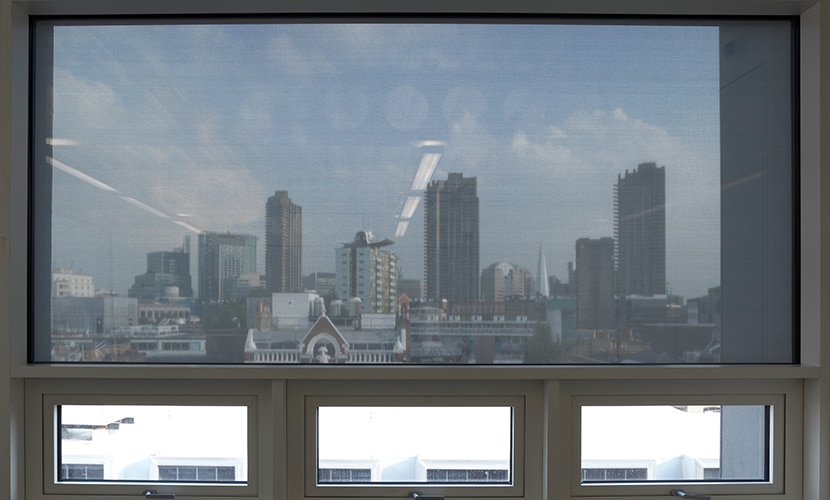The openness factor (OF), sometimes referred to as the openness co-efficient of an external blind fabric refers to the percentage of perforations (holes) in a fabric against the total surface area of the fabric. It is an important factor in determining how much light will transmit through a fabric along with the level of outward vision that is maintained.
A material with a lower openness factor will typically have a lower light transmission level and therefore less of a view through it, whereas a higher openness factor will give a better view through the material but also let more light through which could lead to glare issues. Glare occurs when large amounts of light are directed in one place, therefore causing the field of view to become bright and subsequently discomfort to eyes which can lead to fatigue, headaches and errors.
The size of the perforations too will play a big role in determining whether there is a possibility of glare. If two fabrics have the same openness factor but one has fewer larger holes and the other has lots of microscopic holes, the fabric with lots of little holes will diffuse and deflect incoming light better than the one with more larger holes, leading to an evenly distributed natural light source in a room and at a workstation.
There are many additional factors that affect the transmission of light through a fabric along with outwards visibility including the colour, thickness and construction of the material plus the conditions outside.

All our external blind ‘dimout’ fabrics have a 4% openness factor with a uniformed microscopic hole (perforation) pattern, which offers when opting for a mid-dark colour fibre the best balance between heat control, view-through and natural daylight. If a blind is for a bedroom, home cinema or similar where complete light exclusion is needed along with no view through, opt for a blockout fabric which has a 0% openness factor (non-perforated).

